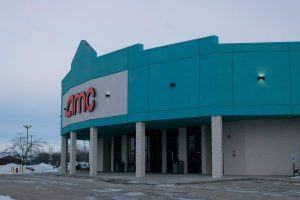Asian center could be moving
September 6, 2002
Asian and Asian-American students may see a cultural center of their own at NIU within the next few years.
Because 7 percent of NIU undergrads are Asian-American – the second-largest minority group on campus – there has been talk of a growing need for an Asian support system.
The Asian-American Task Force met Thursday afternoon and discussed the proposal for an Asian-American Cultural Center at NIU.
“We actually have more Asian-American students than Latino students,” said interim vice provost Robert Wheeler, who also is the chair of the task force. “It seems appropriate to have support systems for Asian Americans when we already have support systems for African Americans and Latinos.”
The task force approved a request to the provost for a temporary Asian-American Cultural Center. The group will request the use of the Jacobs House, which is the current Family Center building at 429 Garden Road, one block south of University Resources for Latinos.
The Family Center, along with Health and Human Sciences, is scheduled to move into Wirtz Hall once renovations are complete. But, the renovations have yet to begin and there’s no timetable for them to start.
“Moving to Jacobs House would hinge on the renovation of Wirtz Hall,” Wheeler said. “But we’re not sure when that will happen.”
Wheeler also said he took a walking tour of Jacobs House and was pleased with the surroundings, but noted that the building could use a few improvements like fixing water leaks, which the university already has looked at, and a fresh coat of paint on the inside.
Funding for such improvements still is under discussion.
“I and others are going to do our very best to find the appropriate natural resources,” Wheeler said. “But I cannot give exact details on it at this time.”
The Jacobs House also is a small building for a cultural center, although temporary.
“I think the largest room could probably accommodate 20 people comfortably,” Wheeler said. “Obviously, there’s certain kinds of events where that would not be nearly large enough. At this point, for Asian-American students to have a place they can consider their own is of much significance. It’s the best opportunity for space that I can see at the present time.”
The task force submitted a feasibility study for a center in March of 2001 to NIU president John Peters.
“The task force appointed a working group, which attempted to understand what were the needs of Asian-American students on campus, and proposed a facility, a physical building, that would meet these needs,” Wheeler said. “Obviously, in a time of budgetary constraints, the president has to consider these things very carefully before making a commitment to such a center.”
Peters has yet to officially respond to the study.
“I’m sure we’re all aware the president has a great many things to think about these days,” Wheeler said.
Other issues discussed at the meeting were plans for Asian-American Welcome Night and the possibility of an Asian-American certificate program.
“We’ve discussed a number of courses that might be suitable for an Asian-American program,” Wheeler said. “The department of history is about to propose a new course in Asian-American history. Once that’s approved, then we think we’ll be in good shape to develop an entire Asian-American program of study.”
Student trustee Jesse Perez, who also attended the meeting, started working with the task force last spring for a cultural center.
Perez said he heard by word of mouth that the Family Center would be moving to Wirtz Hall.
“After that, things just kept moving from there,” he said.
Perez also would like to gain support from other groups on campus for the center.
“I would like to include lots of support from different cultural groups on campus,” he said. “It’s important to continue support by asking cultural groups to send in letters to say this is something needed by the community.”
Michelle Bringas, programming coordinator for Asian-American Resources, is happy to see the possibility of a center.
“It’s an opportunity to show the commitment of the university to meet the need of Asian and Asian-American students,” she said.
As for a permanent solution for a center, Wheeler said it’s hard to predict.
“We can look at the historical example of the Center for Latino Studies, he said. “They were housed for a number of years in an older building on the edge of campus. Eventually, that was torn down and new center was built on the same spot, but that did take a number of years. I think we’re all aware that may be the situation again.”
Campus editor Jeff Goluszka contributed to this report.






